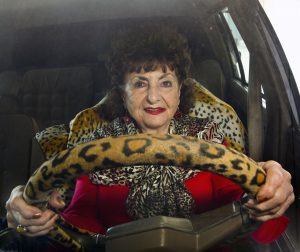This piece was originally published in The English Pub (April 2020 Newsletter, pg 22-23).
In March, in the middle of the virus onset, conferences I had planned to attend began cancelling. Papers I’d workshopped with friends were put on hold, and opportunities to reconnect with colleagues and reinvigorate my inspiration to teach evaporated. It was about that time that I remembered the Echoes & Reflections organization I’d learned about at an NCTE convention. I’m always shy about undertaking new adventures alone, so I talked it over with a friend who teaches mathematics and together we embarked on an April training course in Teaching the Holocaust: Empowering Students.
I know quite a bit about the British Civil War and Victorian cultural shifts, but I know embarrassingly zip about 20th century history, so I had a lot to learn. I’d never puzzled over the meaning of the term “antisemitism” before. I didn’t realize that Jews weren’t allowed to be teachers. I wasn’t aware that a vast archive of firsthand records and artifacts is available to those who incorporate Holocaust studies in their classroom curriculum.
In this course designed primarily for middle and high school teachers, I was able to identify the connections I need to make in my university classes—to Shakespeare plays, to William Blake’s Romantic poetry, and to John Ruskin’s declarations that architecture tells the story of a culture if we read it with care and attention.
I learned about “bystanders” and “liberators” and the importance of defining such terms for students who are investigating Holocaust history for what may be their first encounter. I made note of the Glossary of terms Echoes & Reflections provides. I dove into the vast video archive and watched Paul Parks tell his story about meeting a woman who remembered him and his kindness from when she was a little girl in Dachau concentration camp and he was a soldier in uniform come to save her. His words, quoting hers, “I know you by your eyes” still echo in my soul as testimony of the importance of showing compassion to every child we encounter.
I learned about the Kindertransport that saved Jewish children by tearing families apart. I found a ready link to the Geneva Declaration of the Rights of the Child. I examined the Pedagogical Principles for Effective Holocaust Instruction and considered their insistence that teachers Use Primary Source Materials, Encourage Inquiry-Based Learning and Critical Thinking, and Foster Empathy. These sound pedagogical approaches adapt readily to all that ELA teachers in Arkansas attempt in our classrooms, so the effectiveness of this direction rings true.
I took part in these webcasts: “`Who Will Write Our History?’: A Special Conversation with Director Roberta Grossman,” “Mindful Exploration: Resilience in Times of Change,” and “Echoes of Night: Personal Reflections from Elie Wiesel’s Student.” I connected with IWitness, part of the USC Shoah Foundation, and learned to create assignments there enabling students to access a wealth of video testimonials recording the accounts of witnesses.
There was no way to plumb the vast extent of free resources available to teachers in the three weeks I had, particularly as one of them was spent dodging tornadoes and without electricity and the other two were spent navigating my students’ transition to online learning and modifying and implementing my formula for assessing their performance. Final grades, after all, were due before the work for my course was complete. Nevertheless, I got a glimpse of the possibilities, and I have the summer before me.
I made note of the upcoming webcast Sherry Bard will offer on July 1st, “Creating Context for Teaching Night” and have bookmarked the link to other upcoming webcasts sponsored by Echoes & Reflections. Whether we directly teach Holocaust studies in our curriculum or not, developing a sensitivity to the topic and a sympathetic means of introducing it to students is essential to helping them understand the importance of an empathetic response to the world they live in.
The information I gleaned from my participation in the course has implications in my own classrooms as I teach research skills, composition, world literature, Shakespeare, and other courses. It will help me discuss the importance of developing communication skills and the responsibilities that come with education. It will help me explore with my students the importance of recognizing and defending the humanity of every child. It will enable me to share with them the power of voice that a treasury of records and primary documents provides, and it will highlight the wonder of memory.
ELA classrooms in Arkansas, or their virtual cousins, can feel a world away from the gritty realities of concentration camps in World War II Eastern Europe, but we have local the relics of Japanese internment camps in Jerome to remind us and reason enough to thank God the outcomes of those moments in Arkansas history differed from those of the Jews during the Holocaust.
About the author: Dr. Kay Walter is a Professor of English at University of Arkansas at Monticello. She can be contacted at walter@uamont.edu





